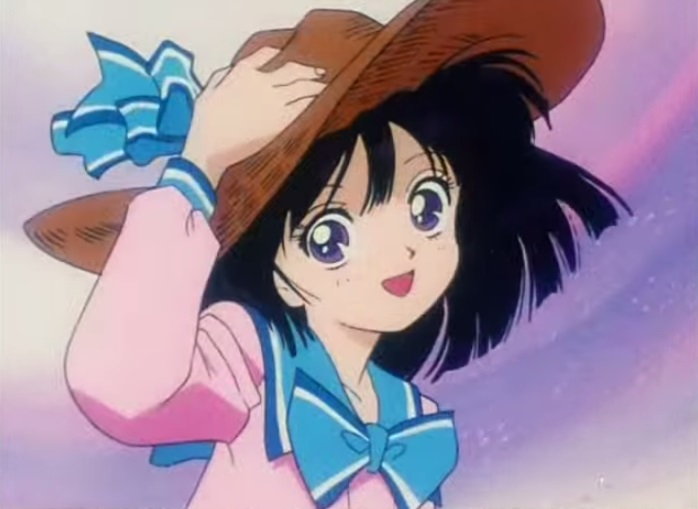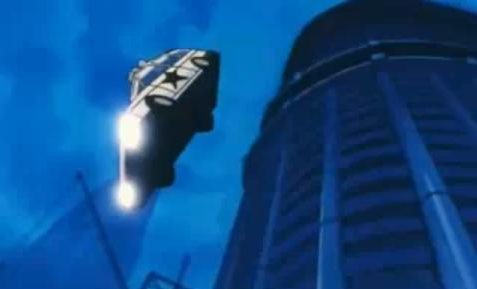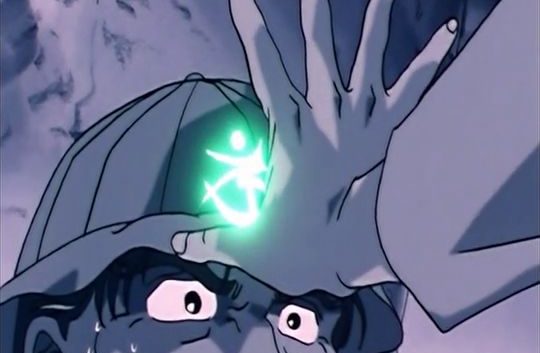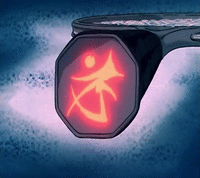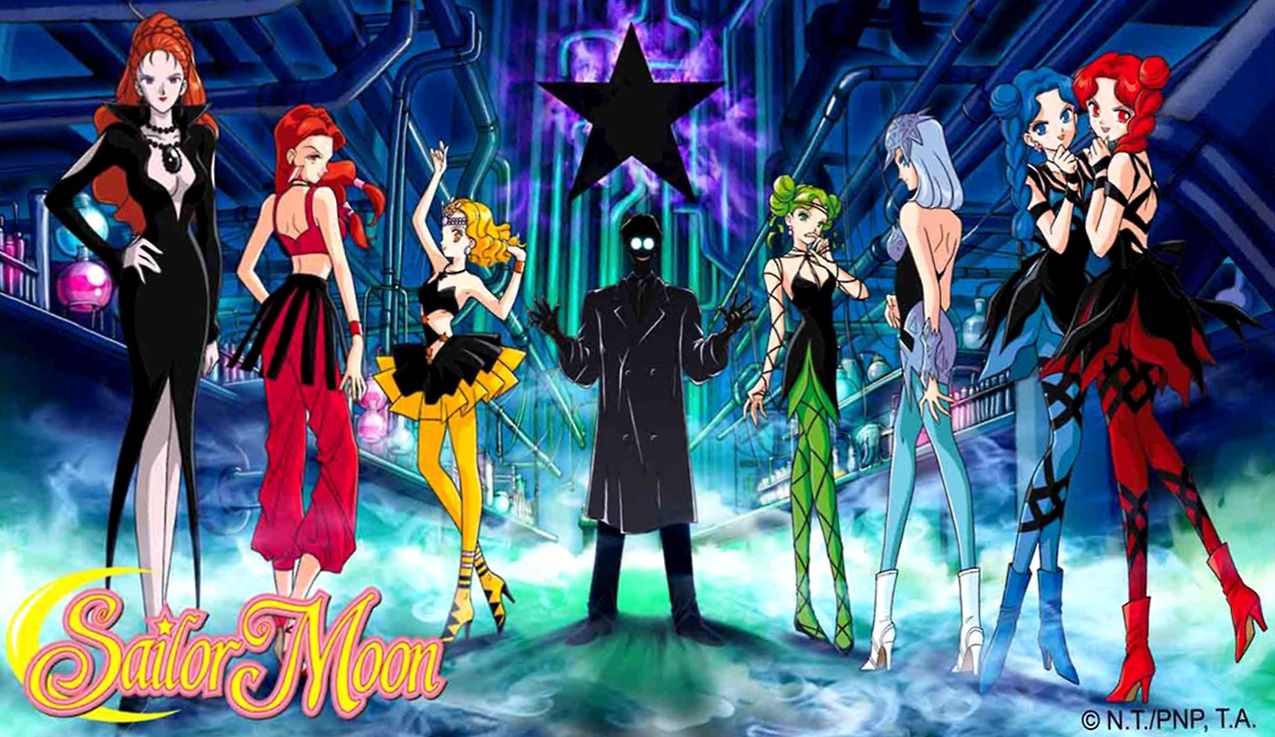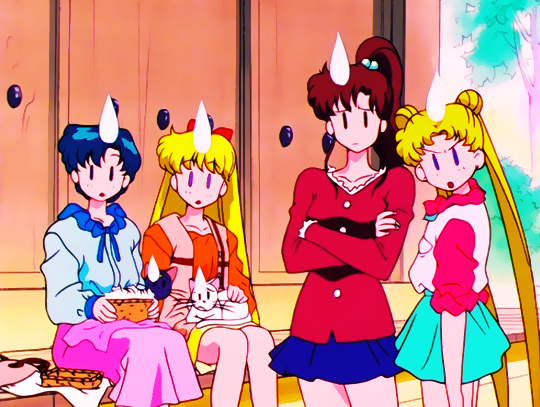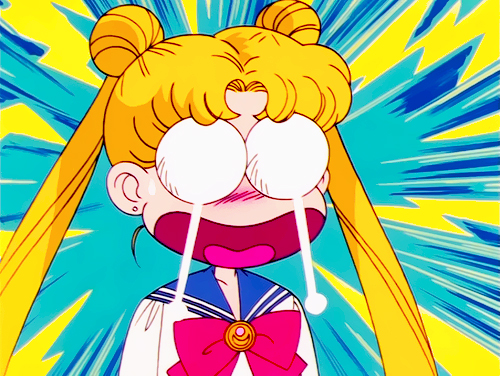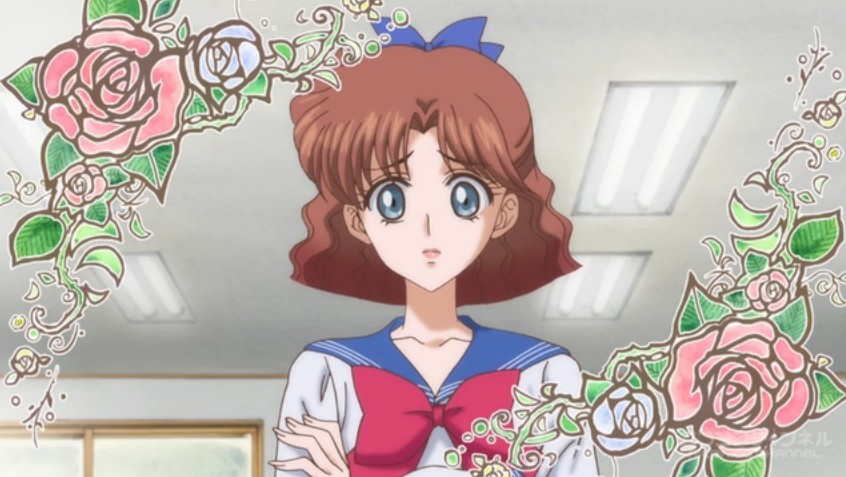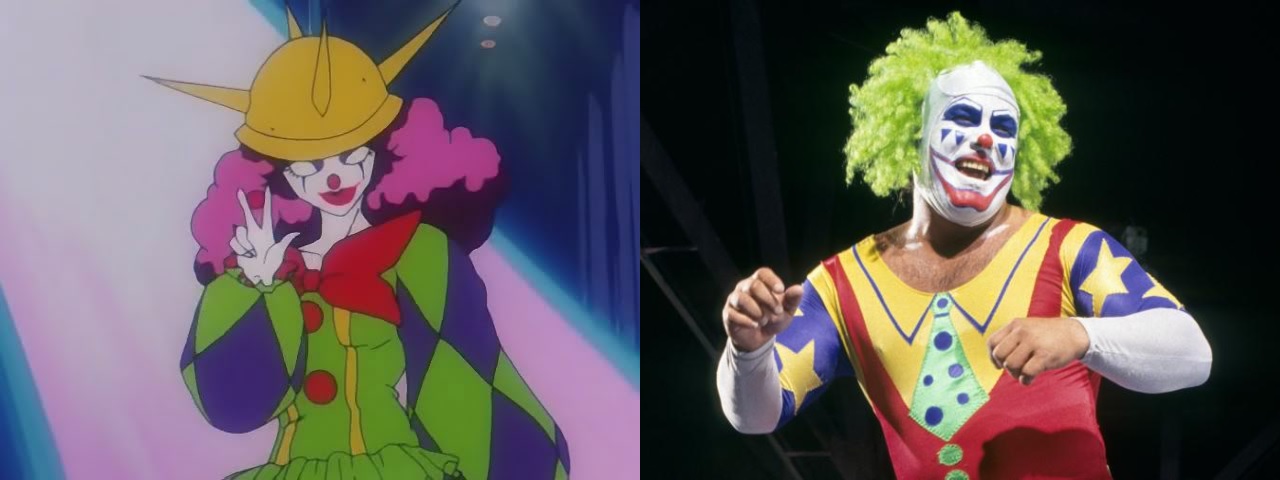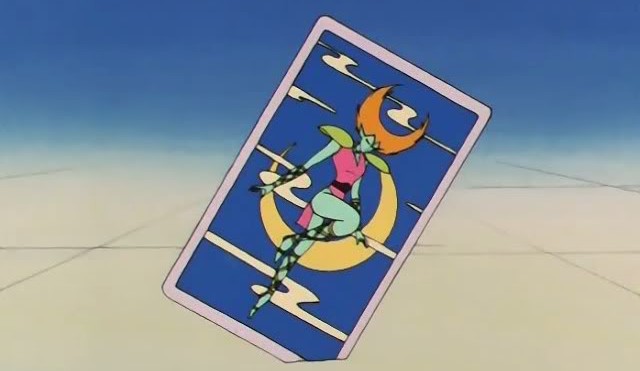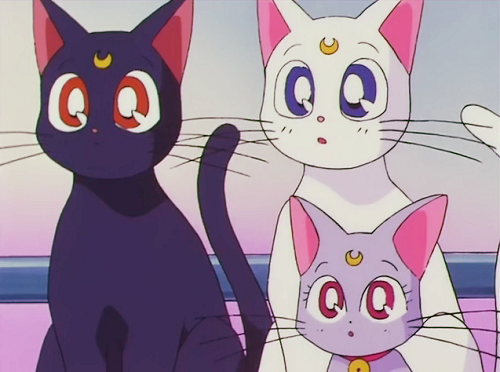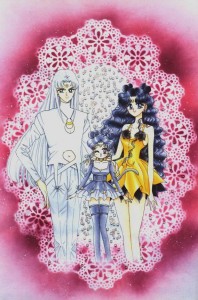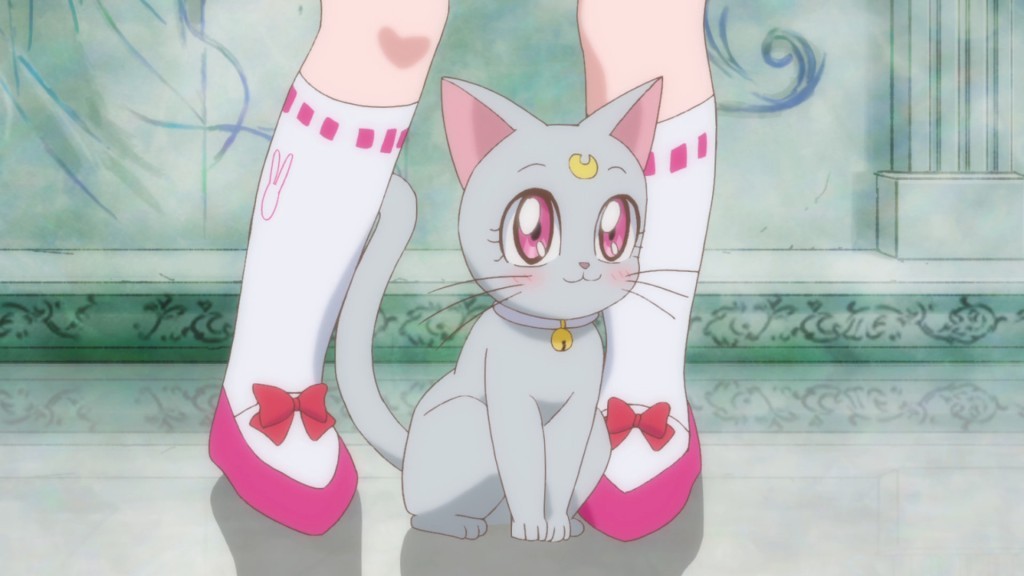For anyone who has been keeping up with anime terminology and slang popularly used in the otaku sub-culture (both in Japan and abroad), you have no doubt run across the term moe. Probably quite often, in fact. Though the term itself mostly is used to refer to the sense of adoration or affection toward a given character, it can also be used in reference to a character (or actions by said character) which would elicit such reactions. One of the popular theories is that the term was first inspired by Hotaru, which is what we’re going to look at today!
Category Archives: Language
Why Did Mimete Call Eudial a Snail Lady?
At first glance, it doesn’t seem particularly noteworthy that Mimete would refer to Eudial at a “Snail Lady” since there are several scenes in the anime where Mimete uses them to harass her. But when you stop and think about it – as I’m wont to do with incredibly tiny details about anime – it doesn’t really make any sense why Mimete would call Eudial something that she so clearly dislikes. I mean, you don’t refer to someone with acrophobia1 as “Ms. Tall Places” or someone someone with an extreme dislike for legumes as “Mr. Bean,” right?2 So if that isn’t the reason, what is the connection between Eudial and snails?
What Does Nephrite’s Cursed Symbol Mean?
One of the interesting things about the Classic season of the Sailor Moon anime is that each of the Four Kings of the Dark Kingdom not only had their own unique objectives, but they also had their own youma and their own ways of trying to achieve their goals. While Jadeite may have decided to get energy en masse, for example, Nephrite chose to get energy from a person when they were at their peak. But there’s one thing that I always wondered about many years ago when I watched Nephrite put his mark on his future victims: does that mark actually have any sort of meaning behind it?
The answer to this question is unfortunately, like is often the case when discussing the world of Sailor Moon, both yes and no. While the producers behind the anime were no strangers to adding in obscure hidden references into the background of scenes or playing games with character names, the answer to this question is rather straightforward – if you know where to look for the answer.
Since we see Nephrite use this symbol in multiple episodes when he puts his mark on a possession important to each of his victims, we can pretty definitively state what the proper orientation is (i.e., which way is up and, thus, how it should be interpreted). When you look closely at it, you can see that this symbol is really nothing more than a stylized form of the katakana used to spell out his name in Japanese – more specifically, the ネ (ne) in ネフライト (nefuraito).
But that’s no good reason to get disappointed, not yet at least! First, we need a brief history lesson.1
Hiragana and katakana,2 the two Japanese syllabic alphabets, developed from evolutions – simplifications, really – of kanji, which had been previously used in the form of man’yogana3 wherein kanji was read not for its symbolic meaning, but was used to phonetically spell out Japanese words. This was obviously not ideal for several reasons:
- Very little consistency between authors over which kanji was used to represent which sound (i.e., there are dozens of kanji that can be pronounced ne, so which do you use?)
- Kanji is time-consuming to write and requires more finesse for fine lines
- It was unclear when a kanji should be read for pronunciation and when it should be read for meaning (a proper noun, for example)
The katakana symbol ネ (ne) comes from a simplification of the kanji 祢 (ne),4 more specifically, the left radical of that kanji. When you take a look at how the kanji is simplified when writing in one of the various cursive styles of Japanese calligraphy, you can see the similarities with Nephrite’s mark.
You can see that as the kanji is written in more stylistic manners, the left radical bears a strong resemblance to the mark that Nephrite leaves on all of his victims. It looks like what we have here is a case of the anime producers actually looking back to the past in order to create something new and unique. I told you this wasn’t a complete disappointment!
Now if only someone could explain to me why it would be okay for Nephrite and Naru to date, like the trouble with Usagi and Mamoru in the anime, I think all of my questions would be answered.
Where Did the Death Busters Get Their Names?
It seems that this question comes up at least once every season, but it’s just too much for me to pass up on the opportunity to discuss the depth that Ms. Takeuchi goes to when naming her characters. And that’s saying nothing of the entirely different styles of pun-tastic names that the anime producers went with when naming their various youma, cardians, droids, daimons, and other monsters of the day. Now that the Death Busters have made their long-awaited appearance in the Sailor Moon Crystal anime, it seems like now is as good of a time as ever to discuss how it is that they characters got their names. So what was the inspiration behind the names of the Witches 5 and the other members of the Death Busters?
How Uncommon Are the Names of the Sailor Moon Characters?
We’ve discussed on several occasions the difficulties involved in localization, particularly when it comes to names, but we haven’t often discussed the names of the main characters themselves (with some exceptions), and how uncommon or strange they may seem. In fact, when the Sailor Moon manga was first being localized into English by Mixxzine1 (before being moved to Smile2 and then serialized by Tokyopop)3 – one of the first magazines for localized manga to be widely distributed in the U.S. – there was a lot of debate among fans over how Usagi’s name was localized.
While many fans either preferred the name Serena, as used in DiC’s localization of the anime, many other fans expressed an affinity for the Japanese original name. Mixx’s choice to translate Usagi’s name literally as Bunny was divisive to say the least. On one side of the argument, you could say that this is how Japanese readers interpreted the name—as a word found in the dictionary. On the other, one could argue that just like Dick Dastardly4 and many other children’s cartoons in the West, the name is simply an extra to give you further insight into the character.
Since there’s no “correct” solution to this issue of nuance in Japanese being lost in localization, I think it’s worth taking a look at this issue from another direction: just how made up are the names of the Sailor Moon cast, and are they really as obscure and fictional as we’ve all been led to believe? How many people can there actually be who are named “… of the moon,” anyway?
There are at least 251 households named Tsukino.
According to this index5 of 19,661,494 Japanese phone book listings, at least. Another site, which uses both phone records and and government census data,6 says that there are approximately 1,500 people with the last name Tsukino, making it the 6,402nd most popular last name in Japan. The site also provides an interesting look into the origin of the last name:
現鹿児島県東部である大隅国曽於郡月野が起源(ルーツ)である。近年、鹿児島県に多数みられる。 「野」は自然のままの広い地を表す。
The origin of the name is the village of Tsukino in the Soo district of Oosumi province in what is now the eastern part of present-day Kagoshima prefecture. There are many with the name found in Kagoshima prefecture. The character for “no” (野) means a wide-open natural space.
That’s right, if you were to go to Soo county in Kagoshima,7 you could very well meet someone named Tsukino. So in terms of realism, how do the rest of the characters fare?
| Name | No. Households | Ranking | Most Common In |
| Tsukino | 251~1,500 | 6,402 | Kagoshima |
| Mizuno | 26,216~175,000 | 105 | Aichi |
| Hino | 4~20 | 64,633 | Oita |
| Kino | 1,284~8,700 | 1,811 | Shizuoka |
| Aino | 21~140 | 26,233 | Hokkaido |
| Chiba | 34~230 | 19,895 | Yamagata |
| Tenoh | 13~80 | 36,041 | Hiroshima |
| Kaioh | 0 | NA | NA |
| Tomoe | 0 | NA | NA |
| Meioh | 0 | NA | NA |
| Osaka | 172~1,200 | 7,346 | Osaka |
I guess it shouldn’t be all that surprising that Mizuno would be that common of a last name (almost breaking into the top 100!) considering that there’s the Mizuno Corporation,8 a popular brand of sports equipment. More than anything else, though, I was surprised to see that nearly all of the last names of the main cast (with the exception of Michiru, Hotaru, and Setsuna) actually exist in the real world. Even Ms. Naru Osaka, who I always figured was a pure parody name, actually has some real-world relatives in the – big surprise! – Osaka region of Japan.
So there you have it! Though obviously Ms. Takeuchi picked the character names in order to match them with their representative planets as well as their chosen element and, to be honest, it may simply be a pure coincidence that any of these are real-world names at all, I for one am glad to see that there is at least one more touch of reality in the world of Sailor Moon.
And for anyone who’s curious – no, there’s no one in Japan that I could find named Usagi. Too bad!
How Did Ail and An’s Cardians Get Their Names?
While the whole Monster of the Day (MotD) concept is one of the more memorable aspects of the battles the Sailor Team take part in during their various adventures, it’s easy to forget that this was really more of an invention of the anime than anything else. This is, of course, all doubly true when it comes to the Cardian Arc of Sailor Moon R since… well… there was no corresponding story line in the manga. While in Ms. Takeuchi’s manga, many of the MotD (be they youma, droids, or otherwise) actually went unnamed since they were one-off, throwaway characters, fortunately for us it seems that the anime had a penchant for creatively (generally pun-related) names. As with the youma of the Dark Kingdom, Ail and An’s Cardians don’t disappoint with their names. Let’s take a look at where they came from!
The Cardians
It probably goes without saying, but the name “Cardian” itself is a play off of both “card” and “guardian,” though the idea of them being guardians is a bit ironic when you think about the fact that they exist to help Ail and An steal energy from humans and fight against the Sailor Soldiers. However, it you look at it from Ail and An’s point of view, I suppose you could easily consider them to be guardians of sorts! Individually, though, is where it gets interesting.
- Vampir: Due to her sucking energy (from our favorite victim, Naru!) for the Doom Tree (Makaiju), it’s pretty obvious that she got her name from the English word “vampire,” though the plant connection seems to just have been added in without any relation to the name.
- As an interesting bit of trivia, Vampir was voiced by no other than Megumi Ogata, the same voice actress who voiced Haruka Tenoh!
- Minotauron: Based obviously in both design and abilities on the Minotaur1 of Greek mythology. As for the “~ron” part of the name? This appears to be related to an obscure French term for a cut of beef between the neck and the shoulder, talon.2 You may also recognize this name from Talon, the owner of Lon Lon Ranch3 in Legend of Zelda: Ocarina of Time and beyond.
- Phalion: You’ll often see the name of this character romanized with an f (rather than a ph), but considering the character’s design appears to be based on that of a sphinx (note that this is not the Sphinx, but a sphinx – a monster in Greek mythology said to be made up of a lion’s body and a female head)4 I think that the beginning part of the name, the “Pha / Fa,” is actually a word play with Pharaoh (which is written similarly in Japanese), hence the spelling.
- Hell Ant: This is one of those Cardians that, to an English speaker, is pretty straight forward. She’s basically an ant. From hell.
- Leshy: This is another name that you’re likely to see written differently on the web, usually as “Reci.” The Japanese spelling is an exact match with the Japanese spelling for Leshy,5 a spirit of the woods from Russian fairy tales. Considering the mythological basis for the rest of the characters and that she attacks during cherry blossom season (and from a tree, no less), this seems like a more proper connection.
- Gigaros: The name is a play on both the Greek word giga– meaning huge6 and the Japanese name for Icarus.7
- Amaderasu: Continuing our mythological theme, this time the reference goes back into Japanese mythology, as this monster is pretty clearly named after Amaterasu,10 one of the first gods in the Shinto religion and the goddess of the sun. Her name may also be a play off of Amadeus, since they’re spelled so similarly in Japanese.
- Seiren: This Cardian’s name is a pretty clear connection to the Siren11 of Greek mythology. The sei part of the name, though, may be a pun in reference to the Japanese kanji for “voice” – 声 – which can be read as sei.
- Utonberino: One of those names that absolutely doesn’t localize well, this is the Japanese word for a traditional boxed lunch, 海苔弁当 (noribentou; nori boxed lunch)12 written backwards. This is obviously where the character design comes from. It’s not exactly apparent in English, but when you break it up as no-ri be-n-to-u and u-to-n-be ri-no, you can see it easier.
- Bipierrot: Named after pierrot,13 a mime of sorts in traditional French theater and the Japanese word for clown, the connection is pretty obvious. As for where the bi part of the name comes from, my best guess is that it’s the same as the one used in used in Pretty Soldier Sailor Moon (美少女戦士セーラームーン; bishoujo senshi se-ra-mu-n), since bi here means “pretty” or “beautiful” and often is used for female-related words.
- Amanju: Once again we go back to Japanese folklore for inspiration, this time to the amanojaku,17 a demon which is said to provoke one’s darkest desires. This would explain the connection with reading everyone’s minds, though judging by the horns and all, the design seems to be based off of a standard Japanese oni.18
- Yamandakka: While the appearance is obvious – an Asura19 from Buddhist mythology – the basis for her name is a bit of a mystery to me. The best possible answer I’ve been able to come up with is that it’s a play on the Japanese term for Asura which are depicted with three faces and six arms, a design known as 三面六臂 (sanmenroppi).20 If you were to yaman could be an altered reading of 四面 (four faces) and 足花 (legs, flower; read as da and ka respectively).
And there you have it! Once again, the various animators, directors, and all the staff who worked on the Sailor Moon anime don’t disappoint when it comes to making creative and interesting character names. Though some of them are a bit obvious to native English speakers, like the Ail, An, and Fiore connections, it’s nice to see all of the different mythologies tied together. And who would have known that a wrestling star would be the inspiration for a character!
What Is the Shared Mythology Between Luna, Artemis, and Diana?
Of course we already know that Luna, Artemis, and Diana are connected through their familial connection, so there isn’t much of a mystery there. What is interesting about this connection, however, is that though Ms. Takeuchi may have recycled the name of Diana, she made a wonderful choice by choosing that as the name for Luna and Artemis’ adorable daughter.
Most people are probably aware of the connection between Luna’s name and the Moon, especially speakers of English and the romance languages, since the name has been been reappropriated for many moon-related terms in astronomy, events, and phenomena (e.g., lunar eclipse, lunar calendar, lunar tides, etc.). The source of this name, like many names associated with the planets and stars, is Roman mythology. The Roman goddess Luna1 is the goddess of the moon, corresponding to the Greek goddess Selene.2 Interestingly enough, this shows a nice, clear tie between Usagi — Princess Serenity — and Luna, which really shows up in the interplay between the pair.
What about Artemis, then? Well, sorry to say to the gruff, male assistant to the sailor-suited soldier, Sailor V, Artemis was also a goddess, this time of the Greek variety.3 It’s not all bad for poor Artemis (the cat!) though; the goddess he’s modeled after was known for her prowess as a hunter and was often depicted with a bow and arrow and was known as the protector of young girls, which fits in well with his position as confidant, advisor, and assistant to Minako.
The question of the day, then, is who is Diana, and how are Luna and Artemis connected to her?
Interestingly enough, Diana is also a Roman goddess of the moon.4 More specifically, she is the Roman counterpart to Artemis, known originally as a goddess of hunting (once again, like Artemis, many of her appearances in art depicted her with bows, arrows, and hunted beasts). Later, she became more widely known as the goddess of the moon, eventually coming to replace Luna in that role in Roman mythology. Indeed, Luna eventually came to be known as an epithet5 — a descriptive name, of sorts — for the goddess Diana. Ultimately, Diana is both Artemis and Luna, making the name a wonderful choice for the daughter of the two feline guardians.
One final little bit of trivia: the Romanian word for fairy, ZẤNĂ,6 is said to have come from the name Diana. That helps explain the moon fairy connection in her original incarnation!
